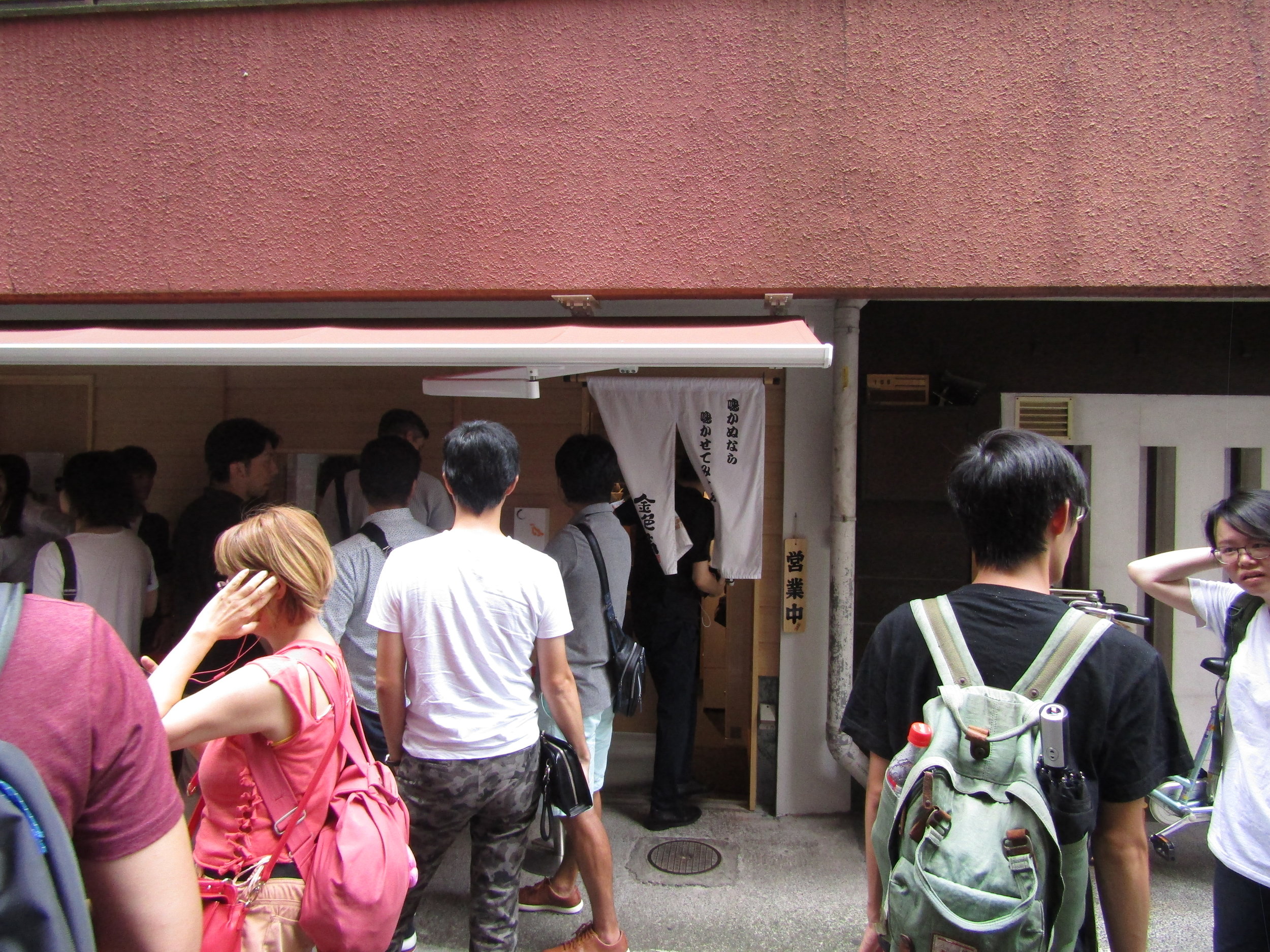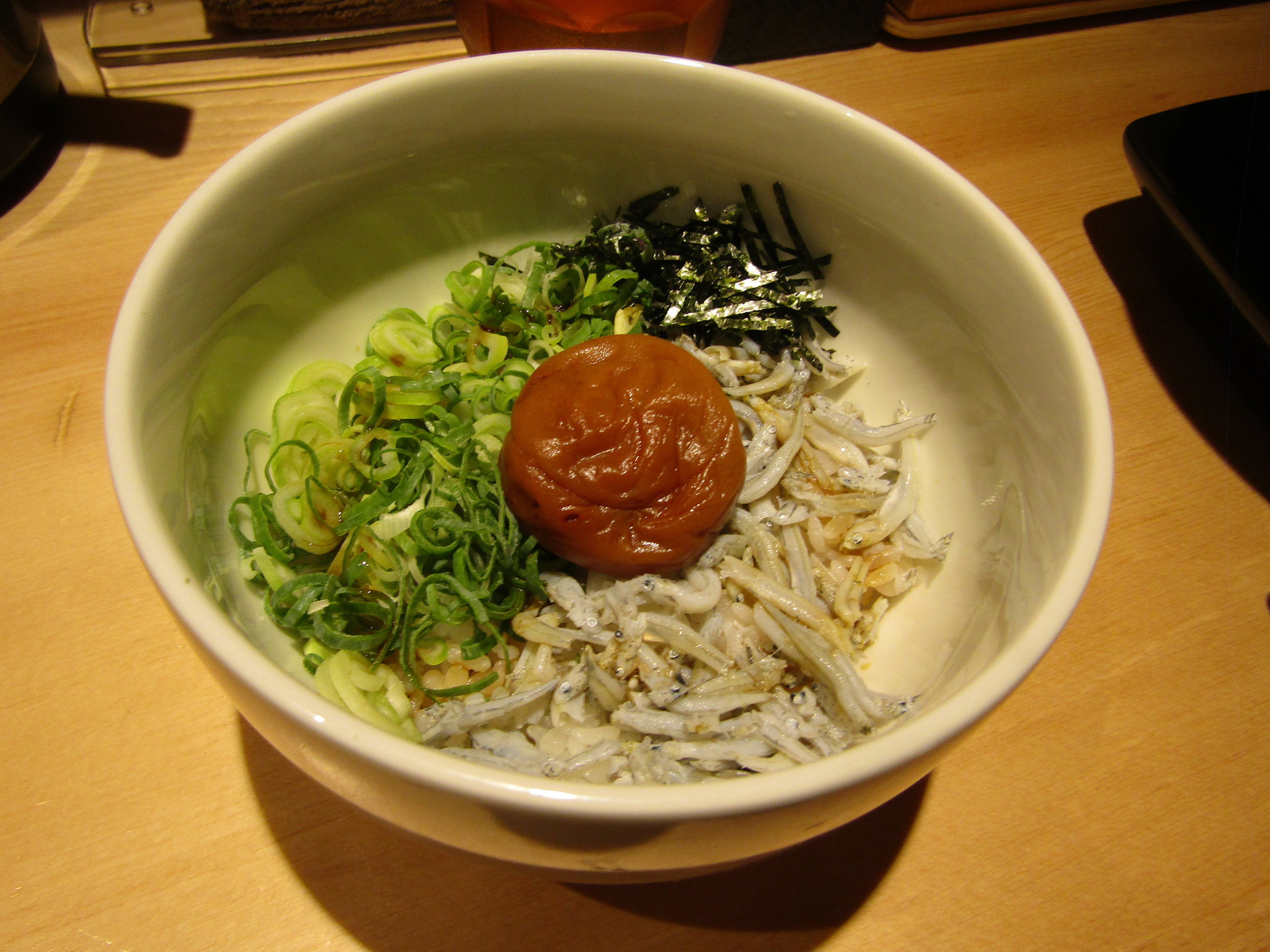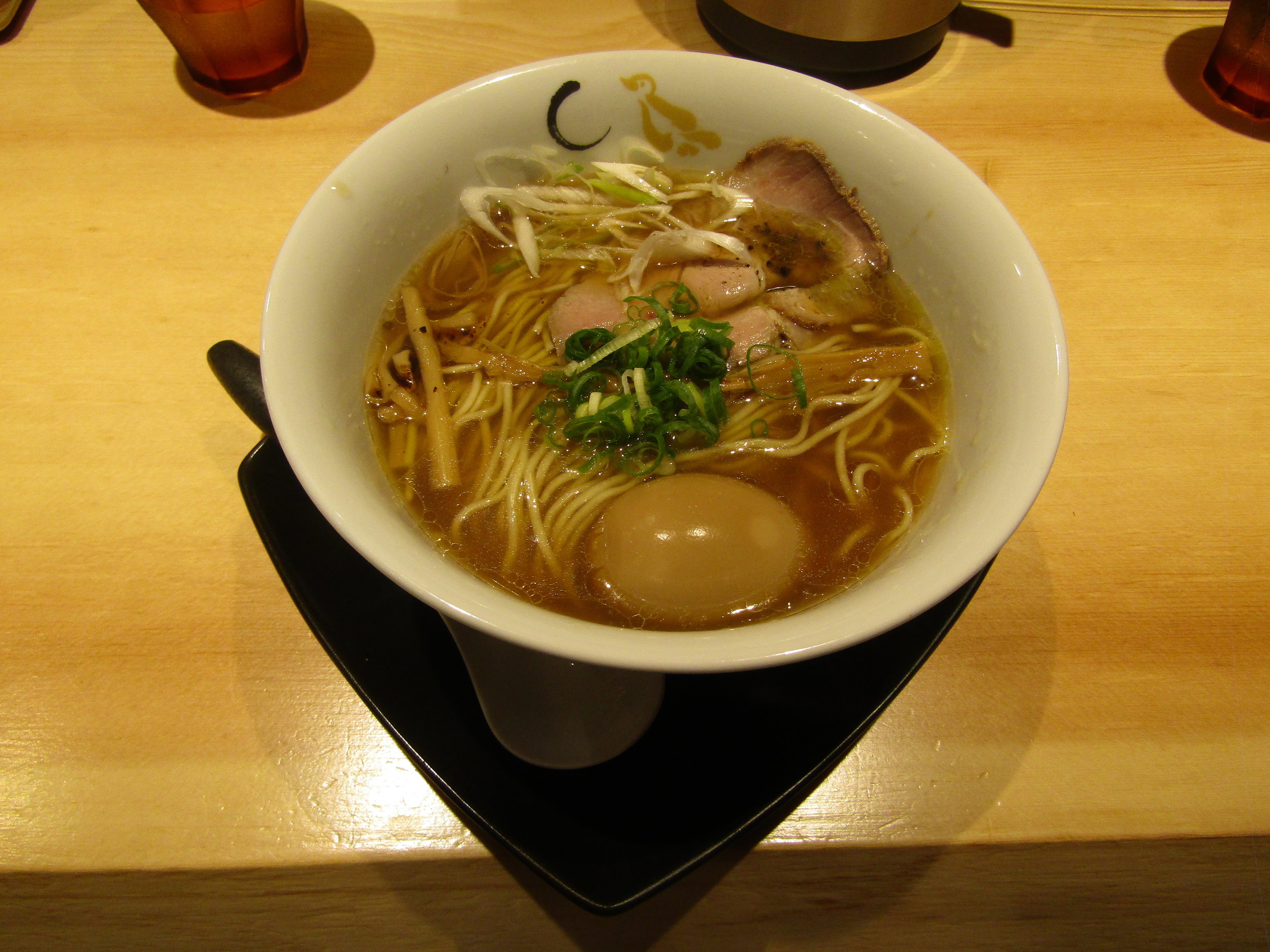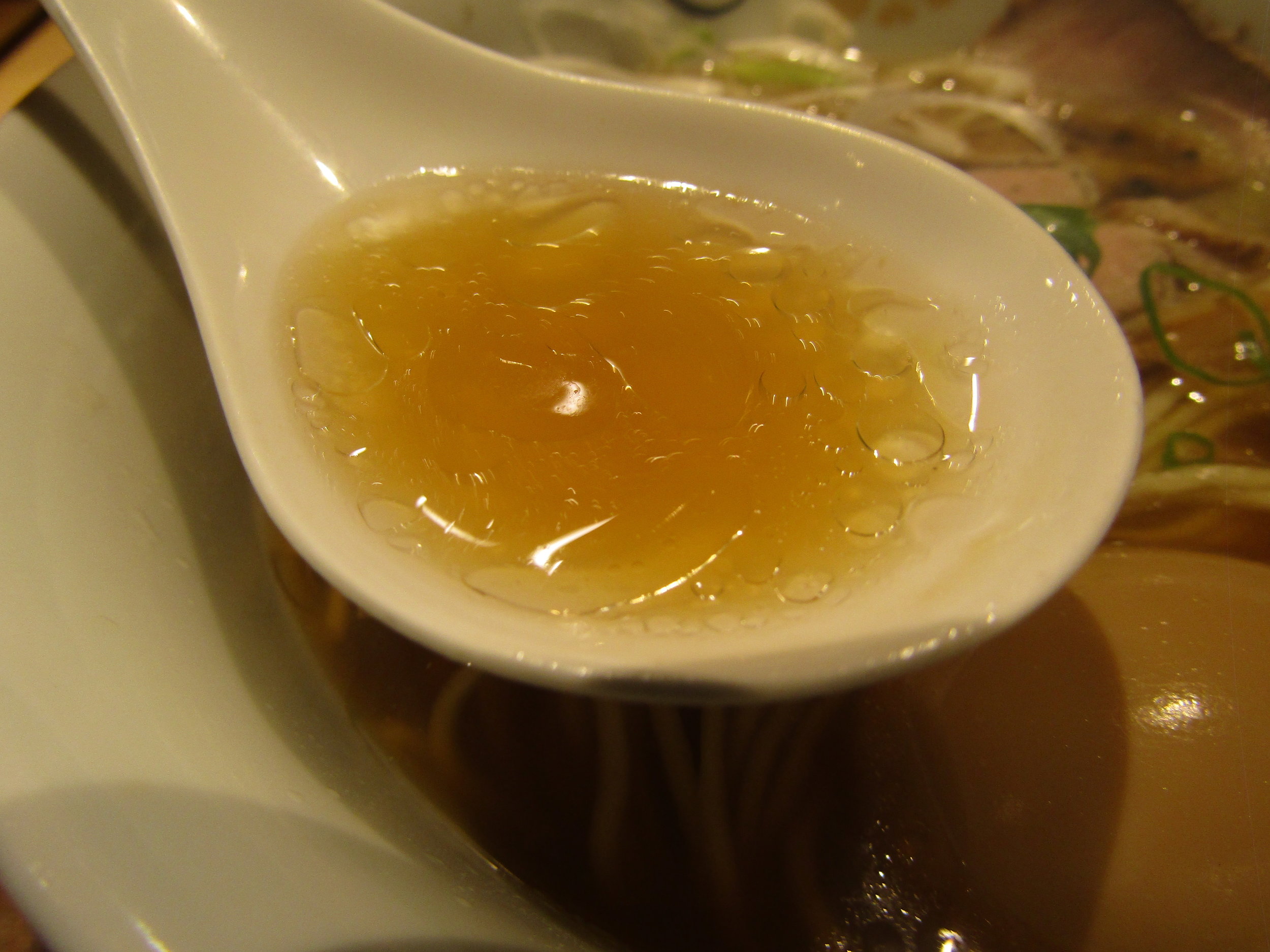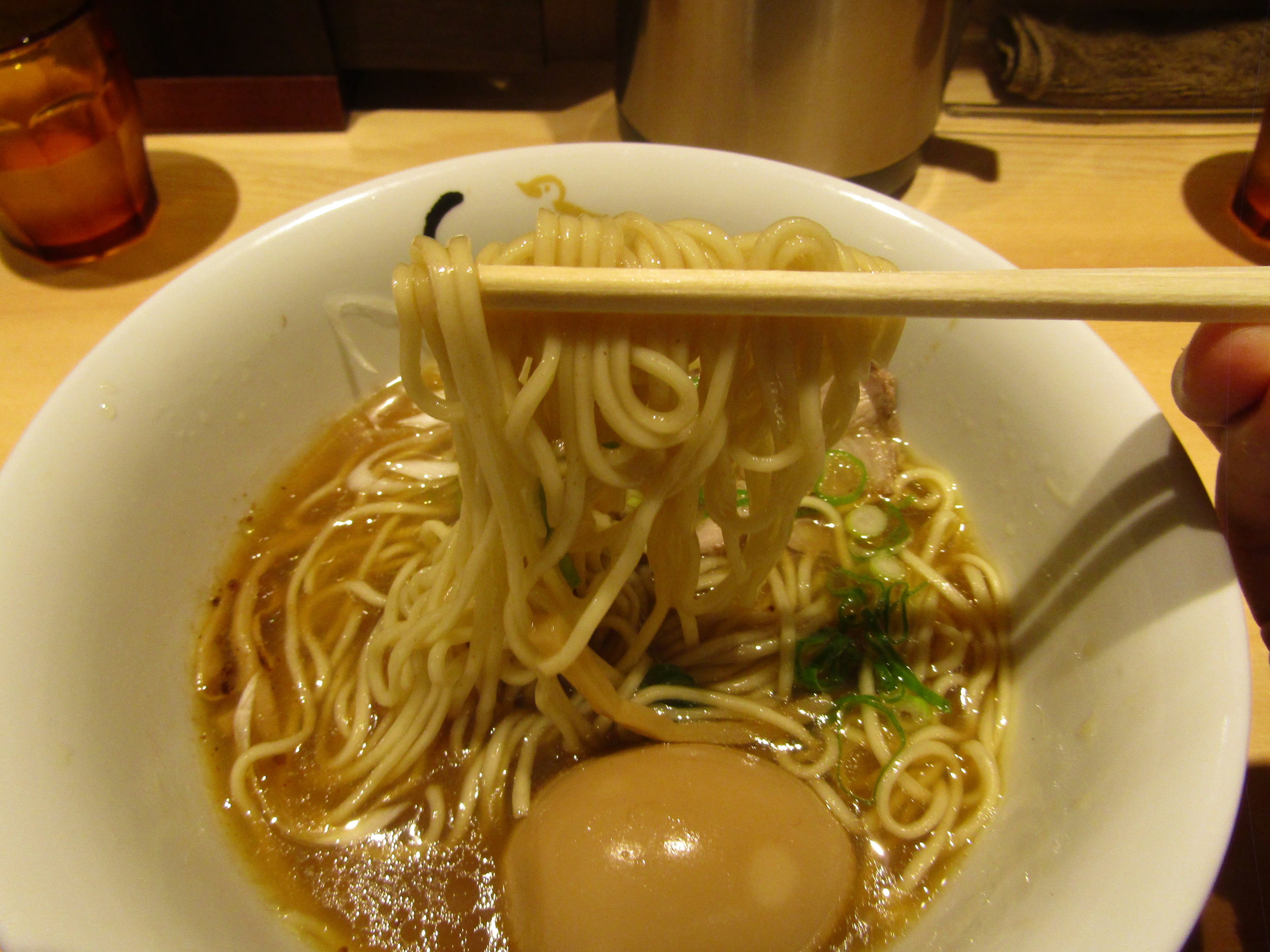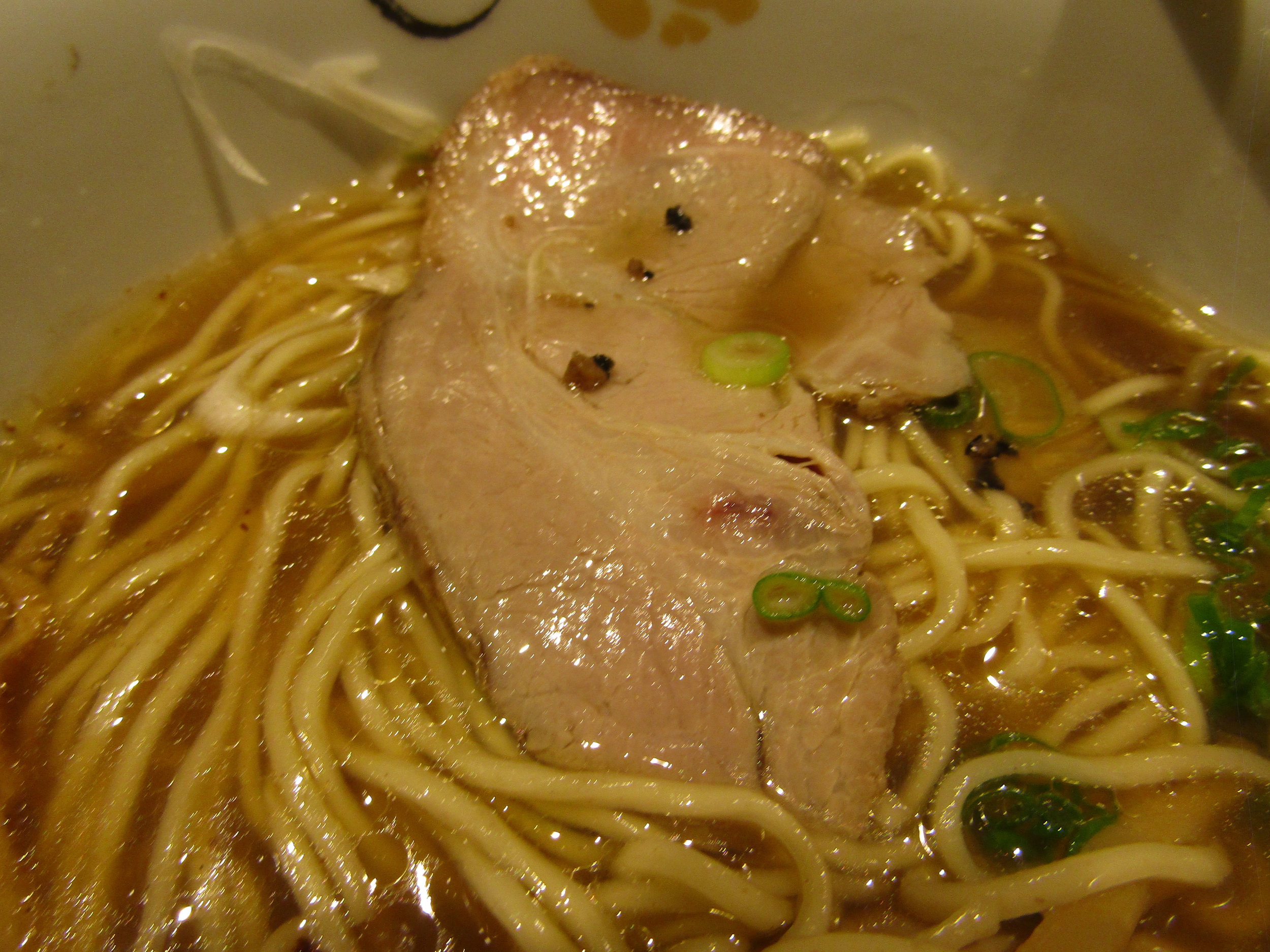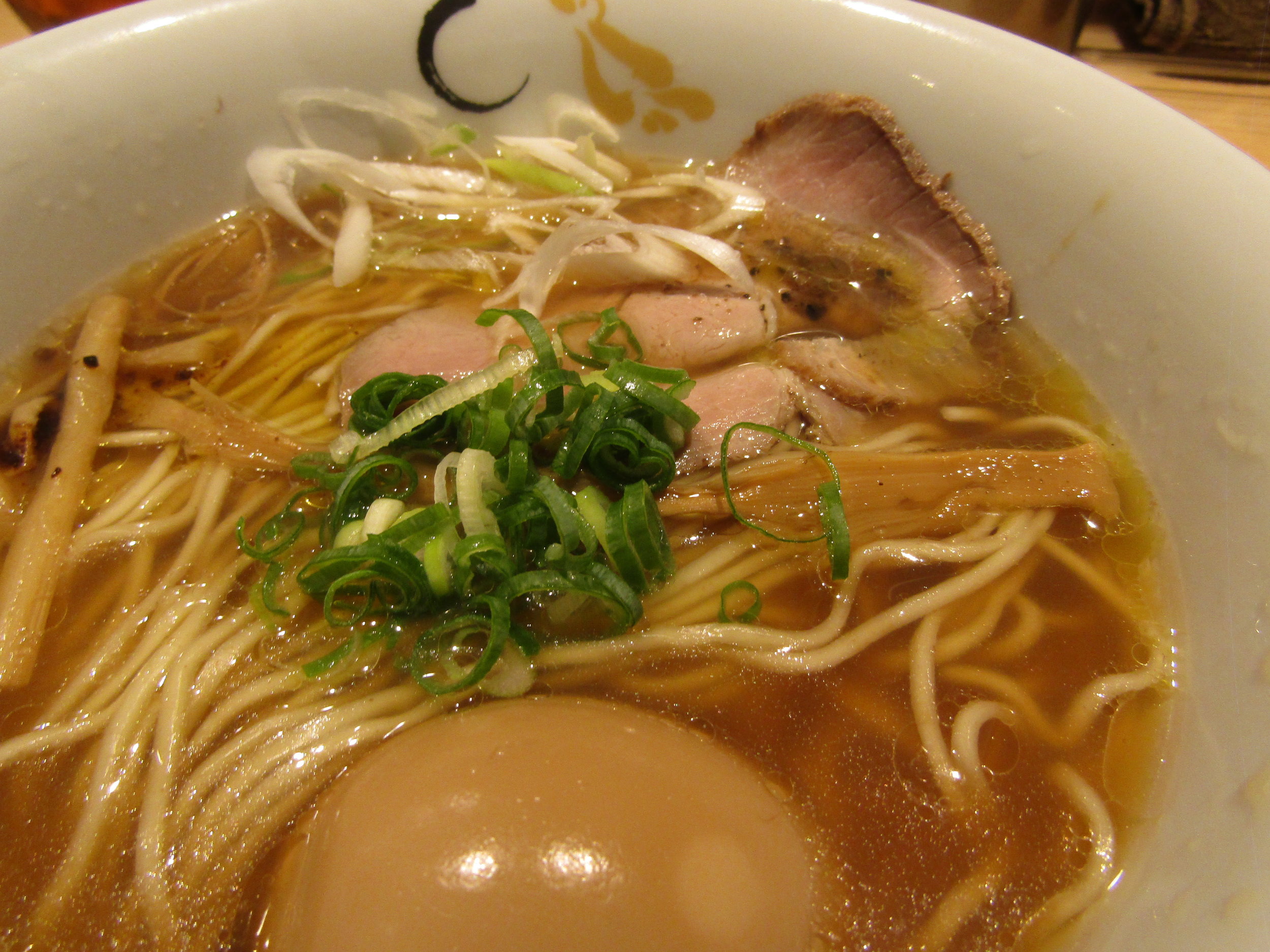Soba House Konjiki Hototogisu (SOBA HOUSE 金色不如帰); 2019 Michelin Star, Shinjuku
For those who don’t know, this year, a third ramen restaurant has been awarded a one star by the prestigious Michelin guide marking a remarkable change in the perception of ramen shops all around Japan. Ramen has long been considered just a cheap eat industry, feeding the masses one bowl at a time. However, in the past decade, there has been quite a shift in the approach of ramen by a number of restaurants. Instead of making large quantities of soup with relatively cheap ingredients to serve as many customers as possible, chefs have begun seeking out high quality ingredients to create the best possible ramen they can serve. Soba House Konijiki Hototogisu has done exactly that serving up incredible ramen out of their new shop in Shinjuku and are well deserving of their new found success.
As you can see from the line, Hototogisu is incredibly popular, even before their one star recognition, as it was listed as a recommended restaurant in the 2018 version of the guide. Given its location in central Shinjuku, ramen eaters from all corners of the world have gathered to try a bowl of their famous shellfish broth ramen. The pictured line was on a Friday at 11:25 am, just a bit after opening, and it actually doesn’t show the entirety of it. There were at least 50 people in line by the time I exited the restaurant with many more looking for the shop on my way back to the station. Hototogisu is definitely a restaurant that you’ll have to adjust your schedule to as it is a bit unpredictable how long your wait will be. On my visit, I arrived at the restaurant at 10:30 and was the sixth customer to be served, so it might be a good idea to come and wait before the shop opens if you want to cut down on your wait time. You’ll definitely be glad you waited however as their bowl is definitely worth the suffering in line.
As always I began my meal with their rice bowl. The rice bowl at Hototogisu is an Ochazuke type in which they recommend pouring a bit of their soup to make a porridge at the end of your meal. Therefore, I left half for after my ramen, but I will say, this bowl was fantastic as is. A brown rice mix is covered with Shirasu (white bait), green onions, dried seaweed, and a Umeboshi (pickled plum). The Shirasu was incredibly fresh and adds a nice salty accent while the Umeboshi is one of the best in Japan and has an amazing sweet and sour flavor that blends well with the rest of the ingredients. Each individual ingredient pairs with the brown rice and I honestly could have eaten another bowl of this. I am glad I saved half for later however as the bowl mixed with their amazing soup from the ramen kicked this up to a whole new level. As a Japanese, I grew up with the Ochazuke and have had many bowls in my life. It is a staple breakfast item and I probably have eaten a hundred iteration of this dish, but this might take the cake. The rice soaked up the amazing shellfish broth nicely while the sweet and sour Umeboshi balances the savoriness of the soup. The green onions are fresh and crisp and the Shirasu white bait gives a saltiness to the soup rounding out an incredible side dish. I definitely recommend an order of this rice bowl on your visit.
Next up was their Shoyu Ramen. The broth is pulled primarily from three different types of clams and combined with broth from a chicken and dried fish blend. The soup is quite delicate, as is most shellfish based broth, and is simmered on a low heat to carefully draw out the broth without getting any of the bitterness that can come from a high heat. The flavor profile for the ramen is quite light. You’re not gonna get a heavy clam flavor like a clam chowder, but rather you’ll get the gentle sweetness and ocean savoriness you might get from eating some raw clams or oysters. The tare is made from a blend of 4 different soy sauces and the condensed umami drawn from a variety of seafood and chicken. The broth and tare pair incredibly well to create an absolutely addicting soup. The soy sauce tare has enough seafood umami blended in to accentuate the fresh seafood flavor of the broth and is hard to put down.
Noodles are of course homemade to a thin, chewy consistency soaking up just enough soup to enjoy every bite. The bowl is then topped with a few slices of their roast pork char siu, few slivers of their menma bamboo shoots, spring onions, green onions, and their specialty oils. I opted for the soft boiled egg option so a soy sauce marinated ajitama was included in my bowl. What separates Hototogisu from other ramen shops is probably their specialty oil which you can see in the photo floating above the char siu. The oils is a blend of porcini mushroom oil, porcini mushroom flakes, and a black truffle oil. I was a bit curious whether mushroom and truffle oils would pair with a clam broth, but I must say, it really ups the extravagance of the bowl. The mushroom and truffle oils are a bit intense by itself, but when mixed with the soup adds an incredible rich flavor that blend perfectly. Its definitely not just a fancy addition for show.
Next up was the Madai and Clam Shio Soba, which is their specialty shio ramen. The broth is different than their Shoyu Soba and is pulled from Japanese snapper and a variety of clams. You’re not gonna get the fattiness that the shoyu ramen brings as it lacks any animal broth, but it definitely doesn’t lack in flavor. The shio tare pairs incredibly well with this broth as the saltiness of the tare accentuates the broth from the snapper. The flavor reminded me kind of a salt bake snapper. Noodles are the same as the shoyu ramen and work well for both varieties. Cooked al dente and is perfectly made to not overpower either soup varieties. Finally, the bowl is topped with bamboo shoots, pork char siu, green and spring onions, bit of snapper flakes, and the mushroom/truffle oils. The snapper flakes is a change from the shoyu ramen and I appreciated their dedication to the fish theme with the snapper meat. It doesn’t have a lot of flavor, but was a nice addition to my bowl. If I had to choose I think I’d prefer the Shoyu Ramen, but you’re definitely not missing out with either options. Both are incredibly well made and mark its quality that brought them their Michelin star.
Konjiki Hototogisu was actually originally located in Hatagaya station, but moved about a year ago to this current location. In an effort to evolve and bring their ramen to a new level, they moved to this beautifully renovated shop in Shinjuku. One of their goals was to be internationally recognized and with their growing popularity they must have felt confident enough to survive in the competitive Shinjuku market. And, well, they have thrived and attained their goal with their newly minted Michelin star. So congratulation to Hototogisu. They have definitely upped the bar for future ramen shops striving for Michelin stars and hope its the start of more to come.
